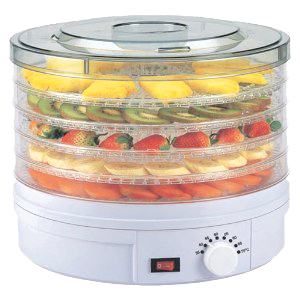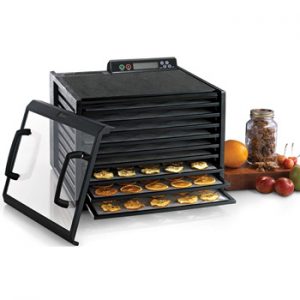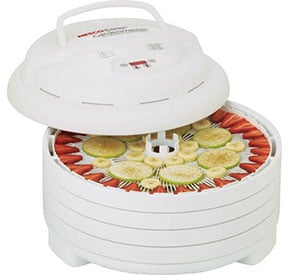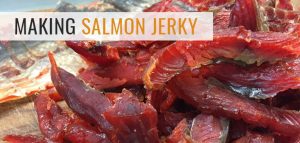
But, drying it is the more natural way to store this veggie and save it for those cold days. With a high-quality dehydrator, you can dehydrate it and preserve this delicious food throughout the year. When it is prepared this way, it will produce the most consistent results.
You can purchase a new dehydrator in a wide range of costs and sizes. This unit has a small fan or blower that circulates the air so it can provide fast drying procedure. It can maintain consistent heat because some of them are equipped with timers and thermostats.
What Kind of Tomato Should You Use for Drying?
It has fewer seeds and more flesh than other varieties. We must warn you not to use beefsteak one because around the seeds it has a high amount of gel. When choosing the perfect ones for the food drying process always pick tomatoes that are the same size, meaty and firm.

What Are the Advantages to Drying This Vegetable?

“Food dehydrating is based on one core principle: Quickly remove as much moisture from the food as possible to inhibit the growth of bacteria, mold, and yeast. Some people prefer to dry food because it takes less time, money and energy than other food-storage methods, such as canning or freezing.” according to Hobby Farms.
“Food dehydrating is based on one core principle: Quickly remove as much moisture from the food as possible to inhibit the growth of bacteria, mold, and yeast. Some people prefer to dry food because it takes less time, money and energy than other food-storage methods, such as canning or freezing.” according to Hobby Farms.

Process
The perfect option is to grow yourself the paste varieties, for example, San Marzano or Roma because they are an ideal choice for this process. Using sustainable agricultural methods try to find the local source if these particular vegetables aren’t available.
In the end, it is always better to grow it yourself than to buy one because you won’t spray it with the different chemicals and pesticides.
When using some large tomatoes, you need to cut them into small pieces so it can dry properly. That way it won’t take much time to dehydrate. If you notice any parts, you don’t want to eat or stems quickly remove it.
If you prefer you can take the skin away from the tomato. The best way to do that is to place it into the water that boils until you notice that the skin is beginning to crack, then quickly put it into ice water and it will peel immediately. Of course, you can remove some seeds but we are not recommending that because the flavor might get detracted.
If you like it sprinkle the vegetable with the kosher salt or sea salt or with some herbs you want such as oregano or basil. You can season them after they are dried with the herb-infused olive oil.
It takes about six to eight hours for tomatoes to dry and it all depends on your personal preferences. Do you love a plant to be medium or extra crispy? Just make sure you don’t over dry them.
The tomatoes should be leathery and deep red, not brittle but flexible. After you remove it from the appliance, leave it to rest for about ten minutes. Use a vacuum sealer or a Ziploc bag to store it. That way it will preserve its flavor and color for months.

Benefits of Dried Tomato
The first advantage is an excellent taste. You will save a lot of money if dehydrating it yourself. It is natural, reduces waste and portable.
“Given the outstanding combination of antioxidant and anti-inflammatory nutrients in tomatoes, the potential of tomato consumption to support our cardiovascular system and lower our cardiovascular risk has long been on the radar screen of health researchers. One team of researchers recently gathered together 21 studies that looked at tomatoes and cardiovascular disease and analyzed them as a group to try and formulate some conclusions about the cardio-related benefits of this food. What they found was a repeated and significant ability of tomato intake to lower LDL cholesterol levels and improve the responsiveness of the blood vessel walls.” according to The World’s Healthiest Food.
Conclusion
Enjoy your dried tomatoes on pasta or salad; as a topping for pizza or crostini; chopped with feta cheese and olive oils over chicken; or with salmon or some other white fish. Bon appetite!














Once you dry it and seal it, can you store room temp or freeze it?
Both option are fine. Keep it in a sealed container at room temperature.